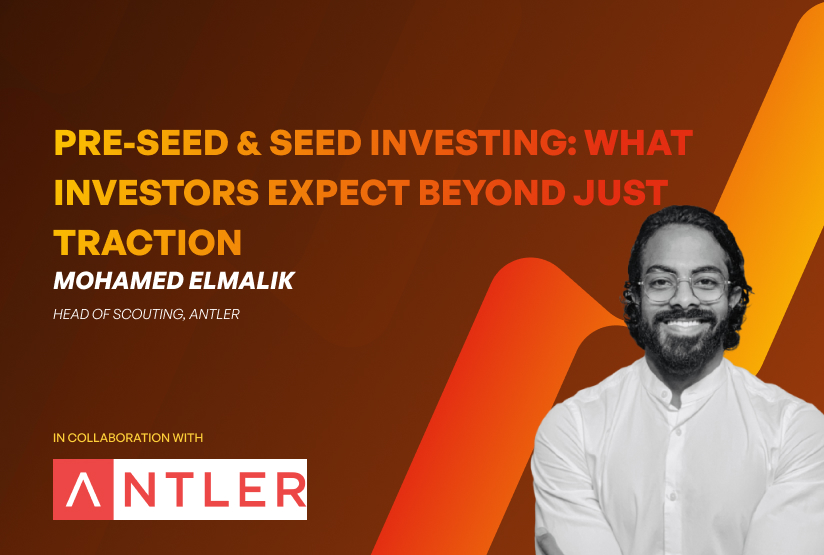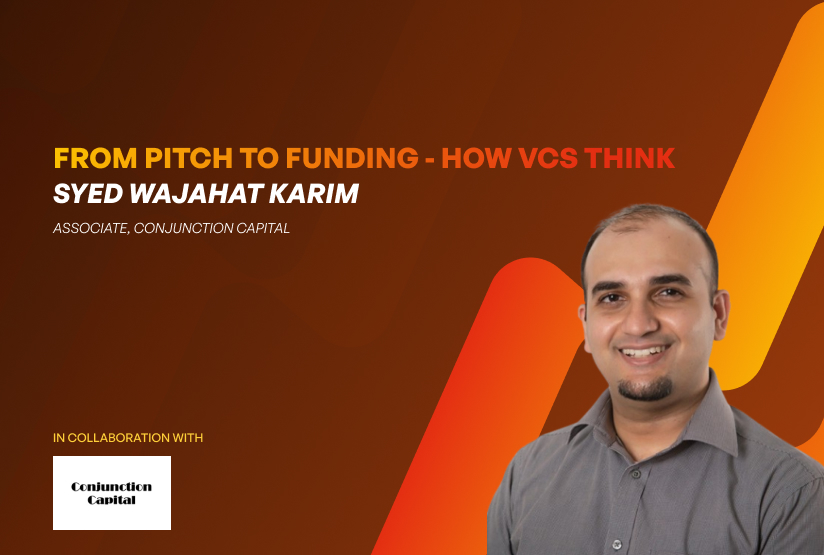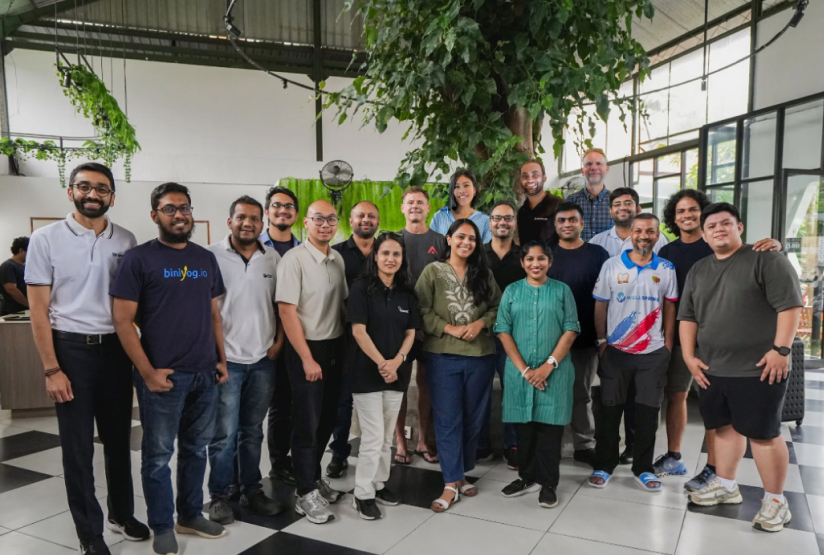

Venture Capital Investing: Why VCs Chase High Growth and a Large Market

Newsletter
Mohi is the Principal at Anchorless Bangladesh, a New York-based venture capital firm where he leads investments in Bangladeshi startups. His prior experience includes roles at Truvalu, an impact investing company, and Maslin Capital Limited, a local private equity firm. Mohi holds a Bachelor of Business Administration from the Institute of Business Administration (IBA) at the University of Dhaka and has completed the CFA and CAIA programs.
Entrepreneurs often question why venture capital (VC) funds place such emphasis on exponential growth and the size of the market when evaluating investment opportunities. They may wonder why VCs seem reluctant to back steadily growing businesses in small or mid-sized (SME) markets. Well, the underlying rationale goes beyond a mere obsession with growth; it is deeply rooted in the structure of VC funds.
Rationale for High Growth
The need for exponential growth in VC investing arises from its inherent financial structure. VCs raise funds from investors, known as Limited Partners (LPs), who allocate a portion of their capital (typically 5% to 15%) in pursuit of high returns. To meet these return expectations, VCs invest in high-risk, high-reward ventures, often innovative or disruptive in nature with high rates of failure. To offset these failures, while still delivering strong portfolio returns, a few outlier successes are needed to generate outsized fund returns. VCs therefore actively seek these outliers to meet return targets and fulfill LPs' expectations. In fact, this dynamic is well-known in the VC world, where returns are said to follow a Power Law distribution with a select few investments driving the majority of returns. This is illustrated in the diagram below:

To understand how these principles translate to the level of individual founders and portfolio companies, it is helpful to analyze the underlying mathematics in a simplified manner. The rationale for chasing exponential growth and targeting large market opportunities becomes clearer through a basic numerical analysis.
To begin with, let's determine how much a typical VC fund of US$20Mn needs to generate from its Portfolio Companies (PortCos) to provide the necessary returns to its LPs by the end of its fund life. Historical VC fund performance indicates that on average, a VC fund returns around 15% (on a compounded return based metric called Internal Rate of Return or IRR) to LPs over ~10 years (Venture fund returns also demonstrate particularly high dispersion with the top quartile funds generating IRRs as high as 45%+). This return is net (Net IRR) after deducting fees and other expenses. Adjusting for these fees, the fund itself must generate a gross return (Gross IRR) of approximately 17% to provide the above-mentioned Net IRR of 15% to the LPs.
If we consider a US$20Mn fund with a standard 8-year lifespan and apply a 17% Gross IRR, the fund would need to grow 3.5x its initial size to reach US$70Mn by the end of its fund life. This return calculation simplistically assumes that the VC invests the entire (investable) fund in the first year and makes a single distribution to the LPs at the end of the fund’s life. The table below provides a summary of this information:

⤉The mathematics involved are considerably more intricate, as the internal rate of return (IRR) is a nuanced metric influenced by the timing and magnitude of cash flows. To simplify matters, a basic model has been assumed where investments (outflows) and distributions (inflows) occur solely at the outset and conclusion of the fund's lifespan.
It's important to note that the VC cannot invest the entire US$20Mn fund into portfolio companies. Typically, a VC fund experiences minimal cash inflows in the initial years, when it primarily invests in companies and has yet to realize exits. Despite this, the fund incurs operating costs such as salaries, rent, legal fees, and travel expenses, which must be covered. Therefore, a portion of the fund is allocated as Management fees for the VCs, which typically range from 1% to 2% per annum, and reduces the amount available for investment.
In our fund example, assuming management fees of 1.5% per annum over 8 years, approximately 12% or US$2.4Mn will need to be deducted from the fund size. This leaves US$17.6Mn as the Investable Fund. If we assume that the VC opts to distribute this amount equally among 10 companies, the average investment per company would be US$1.76Mn as outlined in the table below:

As VCs recognize the Power Law, they are aware that the majority of their investments will likely fail, with only a select few generating the returns needed to drive overall portfolio success. By simply assuming that only 2 out of the 10 investments succeed and equally contribute to the fund's targeted exit value of US$70Mn, each of the 2 winners then needs to generate US$35Mn in exit proceeds for the VC. This is illustrated in the table below:

It is important to highlight here that the two winners are not only expected to cover and return 3.5x of just their own investment cost but of all the other 8 failed investments as well. To compensate for the others, the winners need to grow by a multiple larger than the fund’s targeted growth multiple of 3.5x, which is mainly possible when the winners have the potential to grow exponentially.
So, what does this mean for the winners in our fund example? To understand this, we must analyze the dynamics at the portfolio company level and determine the growth trajectory required to achieve the desired outcome. Assuming the VC invests US$1.76Mn (the average ticket size) only once in the Seed round at a post-money valuation of US$12Mn, the initial equity stake then amounts to 14.7%. However, as the startup progresses through subsequent funding rounds (Series A and B) without additional investment from that particular VC fund, the fund’s equity stake dilutes to 11% by the time of the projected exit in Series B. To yield US$35Mn in proceeds from this 11% equity share, the startup would need to be valued at $320Mn, which is derived by dividing the intended exit proceeds of US$35Mn by 11%.

It's interesting to investigate the growth multiples at each stage of the process to understand why exponential growth is crucial at the PortCo level for achieving successful outcomes. This is concisely presented in the comparative table below:

To achieve a 3.5x return at the fund level, the initial investment of US$1.76Mn must grow by 20x to offset and compensate for the unsuccessful investments. Remarkably, the valuation growth at the PortCo level is even higher, reaching 26.7x due to the effect of equity stake dilution. While this numerical analysis is simplistic in nature, it underscores why VCs mandate such rapid growth at the PortCo level to deliver mid double-digit returns to their LPs.
For founders, it is important to understand that given VC returns are heavily skewed, VCs typically avoid balancing high-risk, high-return investments with low-risk, low-return ones to construct a diversified portfolio like traditional asset managers. Instead, VCs evaluate each investment's potential to become a standout performer in the portfolio. Investments failing to meet this criterion are excluded from the portfolio. Essentially, every investment must have the potential to be an outlier or "home run" to warrant inclusion in the investment basket.
Rationale for a Large Market Size
So, how does market size factor into all of this? Let's continue with our hypothetical fund example. We know that a successful investment needs to achieve a valuation of US$320Mn or more to deliver the targeted exit proceeds to the VC. But what if this investment operates in a market with an expected Total Addressable Market (TAM) of US$500Mn by Year 8?
If the valuation is based on multiples, assuming it's 1x of sales, then a PortCo valued at US$320Mn would need to generate US$320Mn in annual sales, translating to a market share of approximately 65%, a scenario seldom achievable.
Realistically, if capturing 10% of the TAM is feasible, then to achieve US$320Mn in annual sales, the market size needs to be US$3.2Bn. However, with a projected market share of 20%, the required TAM can come down to US$1.6Bn, and vice versa. Similarly, if the expected sales multiple increases from 1x to 1.5x, then the required TAM at a 10% market share decreases to US$2.1Bn. This interplay between market share and sales multiple and its effect on the required TAM is depicted in the sensitivity table below:

What this table effectively underscores is that there is an intricate connection between valuation and market size. A small market effectively limits the valuation potential of a startup and, regardless of exponential growth, may not yield the necessary exit proceeds for a VC to achieve success with its fund.
In summary, VCs require exponential growth because of the power law that governs VC returns, where a handful of successful investments drive overall fund performance. In addition to this high-growth potential, portfolio companies must also operate within large markets, as the potential exit size is constrained by the market size. Therefore, VCs require not only rapid growth but also access to expansive markets to generate robust fund returns.
As a concluding reflection, one might wonder if such returns and growth multiples are realistically attainable. A report by CBInsights compiles the 45 most successful VC investments ever made, showcasing return multiples far exceeding 30x, as seen in the excerpt shared below. The quest for exponential growth in venture capital transcends mere theory; it serves as a fundamental driving force in the dynamic realm of VC. While certainly challenging, it offers unparalleled opportunities for those with the vision and determination to pursue it.

Please refer to the following spreadsheet for all the background calculations:
Click here to open the full spreadsheet in another tab.





















.jpg)
.jpg)





.jpeg)



.jpg)


















.jpg)


.jpg)
.jpg)

.jpg)
.jpg)

















.jpeg)












..jpg)
..jpg)



.jpg)






